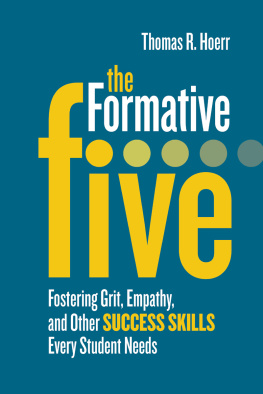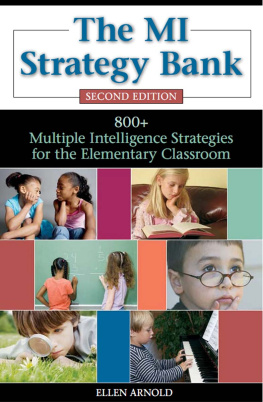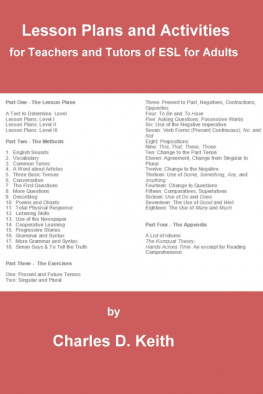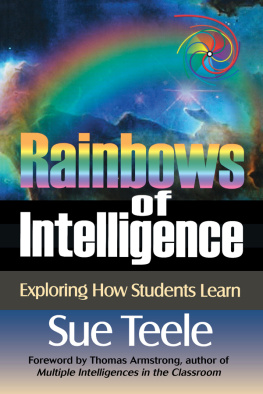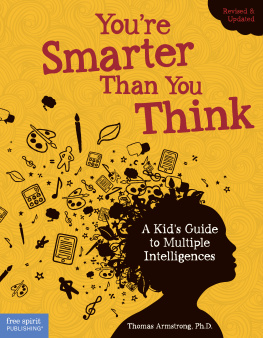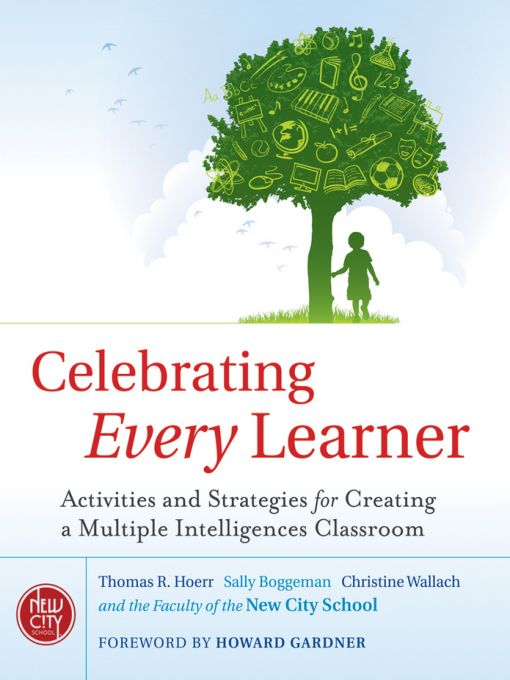Jossey-Bass Teache r
Jossey-Bass Teacher provides educators with practical knowledge and tools to create a positive and lifelong impact on student learning. We offer classroom-tested and research-based teaching resources for a variety of grade levels and subject areas. Whether you are an aspiring, new, or veteran teacher, we want to help you make every teaching day your best.
From ready-to-use classroom activities to the latest teaching framework, our value-packed books provide insightful, practical, and comprehensive materials on the topics that matter most to K-12 teachers. We hope to become your trusted source for the best ideas from the most experienced and respected experts in the field.
More Praise For Celebrating Every Learner
The collective voices and knowledge of forty-six educators with over twenty years of experience in using MI cant be wrong! An essential tool for any school or teacher that values differentiation and strives to meet the learning needs of each and every student.
Linda S. Nelson, executive director, North Carolina Association of Independent Schools
In Celebrating Every Learner, the teachers and staff at New City School write of their experiences using a multiple intelligences curriculum, which will strongly inform any teacher or principal looking to create powerful experiences for their own students.
Christine Kunkel, Ph. D., principal, Key Learning Community
For over twenty years the faculty of New City School has set the standard for school-based teacher research and cutting-edge classroom practice. Celebrating Every Learner provides educators and leaders world-wide with inspiration and tools to create the schools that their learners need.
Mike Fleetham, Learning Design Consultant, UK, www.thinkingclassroom.co.uk; author, Multiple Intelligences in Practice and coauthor, Creating Extraordinary Teachers
Celebrating Every Learner is a treasure trove of practical wisdom gleaned from decades of teachers providing students with an inspired education. This book describes exemplary work that should inspire all teachers (and all principals!) around the world.
Branton Shearer, Ph.D., MI Research and Consulting, Inc., Kent State University; coauthor, Creating Extraordinary Teachers
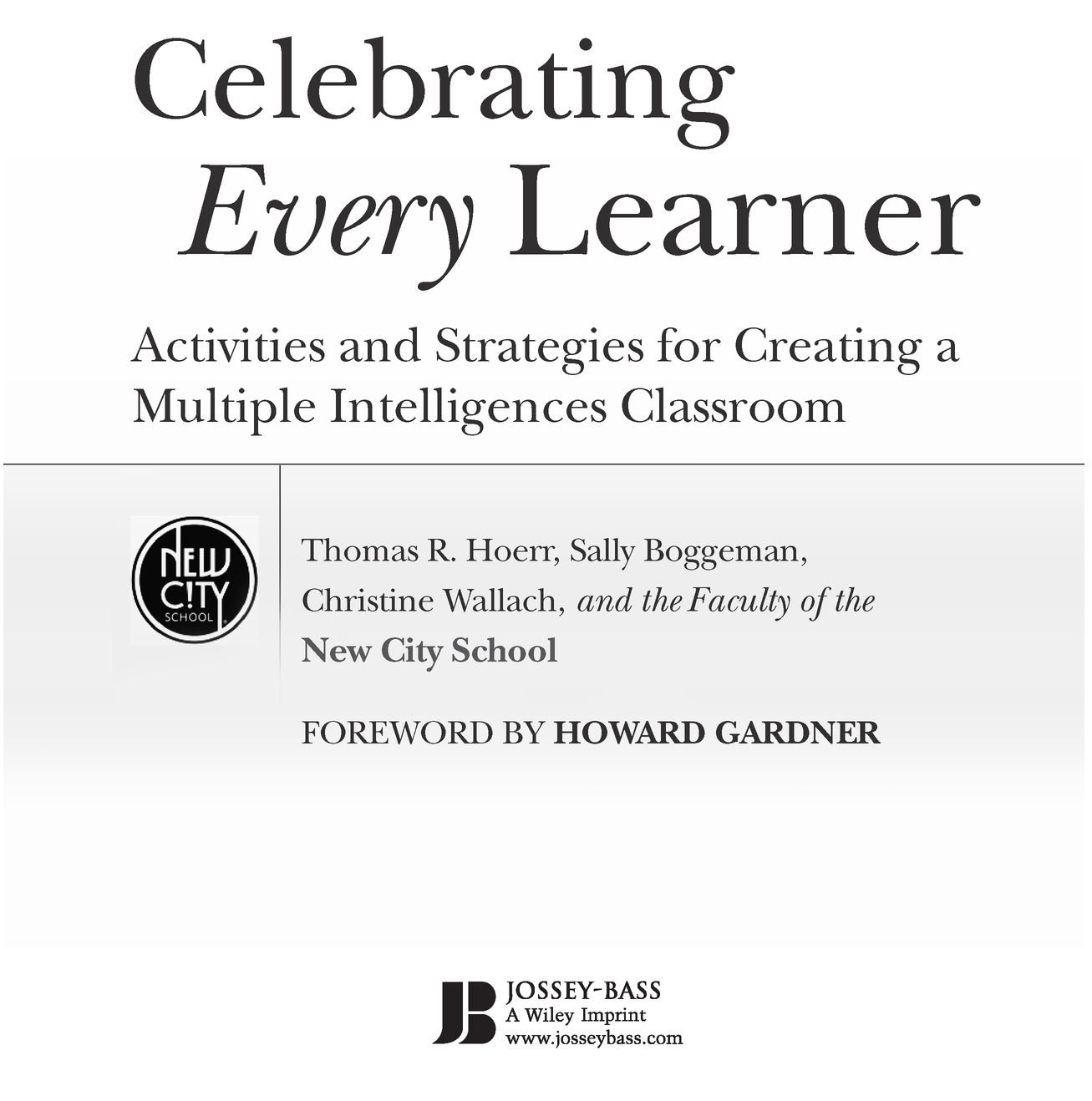
Acknowledgments
Many people deserve to be acknowledged with appreciation for accompanying us on our multiple intelligences (MI) journey. What began over twenty years ago as a faculty book group reading Howard Gardners Frames of Mind has evolved to become a school that values all of the ways in which children can grow and prosper.
None of our students parents were fortunate enough to attend an MI school, and we acknowledge the confidence that they have shown in us. They are part of the educational process too; they attend intake conferences, help with dioramas, come to egg drops and student museums, attend student performances, and review the contents of portfolios.
Our board of trustees has consistently shown enthusiasm for our work with MI, our MI conferences, and our MI books. They value what we do for our students, and they support us in every way. Our schools mission statement includes the phrase As an international leader in elementary education, and the board also appreciates our efforts to help educators around the globe grapple with the best way to use MI.
Dr. Howard Gardner, of course, deserves a special acknowledgment. He not only conceived of the theory of multiple intelligences, but he also has been a friend to New City School. He has visited us, spoken at our conferences, and cut the ribbon to open our MI library. It is so clear that Howard always has students interests at heart! We appreciate his creativity, care, and enthusiasm.
Dedication
This book is dedicated to the students of New City School: those who have been here in the past, those who are here now, and those who will join us in the future. Their curiosity and passion for learning inspire and reward us. Through and with them, we work to make the world a better place for everyone.
Foreword
I first began to think about the topic of multiple intelligences in the middle 1970s, though I did not coin the phrase multiple intelligences until a few years later. At the time, I thought of this line of research on the structure and development of the mind as relevant primarily to psychologistsparticularly those in the specialties of cognitive psychology, developmental psychology, and neuropsychology. I was as surprised as anyone that the interest in these ideas came chiefly from the educational sector, rather than from colleagues in psychology. Yet fairly soon it became evident that, for a variety of reasons, the idea of multiple intelligences could be useful to many educatorseven as, for a variety of reasons, it proved threatening or destabilizing to many psychologists.
Still, it came as a complete surprise to me when educators actually began to talk about schoolsrather than classroom posters, nooks, or practicesthat were built significantly around the idea of multiple intelligences. The first enterprise to get off the ground was the Key School (now called the Key Learning Community) in Indianapolis. Launched in 1987, it has pioneered in many infectious educational practices, ranging from video portfolios to cross-age, interest-driven pods to a flow room. Through many ups and downs, it now consists of pre-K through 12, including a middle school and a high school. Its been visited by thousands of educators from all over the world and has influenced practices in many places.
To my knowledge, the second MI school is the New City School (NCS). Whereas Key is a public school, NCS is a private school. NCS began in the late 1960s, as a pioneering effort to provide quality education for an increasingly diverse urban population. NCS was about twenty years old when Tom Hoerr, then a relatively new head of school, first proposed that the school cast itself in an MI mode. Since then, NCS has taken MI ideas very seriously and has created a variety of innovations that, like those of the Key Learning Community, have had considerable influence beyond its walls. Further, the School has sponsored international conferences, created new entities such as an MI Library and a Centennial Garden, and issued a series of publications, including this book you are reading.
What Ive written to this point is part of the educational history of our time. Donning a more personal hat, Id like now to set down my own impressions of why the New City School occupies a very special place within that history.
From the start, the move to MI has been a cooperative enterprise. Tom Hoerr has worked closely with faculty, students, parents, and board to avoid any sense of a top-down dictate. No one has been forced to get on the MI bandwagon; proposals, criticisms, recalibrations have been encouraged and taken seriously.
Indeed, NCS strikes me as the embodiment of a learning organization. Although that term is bandied about frequently in both the business and the educational worlds, it has been honored as much in the breach as in the observance. NCS is a deeply and pervasively reflective environment. The community tries things out, seeks to learn from experiments, corrects course when necessary, and, in cases of success, seeks to understand the reasons for the success and how to build upon it. In addition to Tom Hoerrs writings over the years, Christine Wallachs chapter on how to become an MI school provides a valuable guide to the launch and maintenance of a learning organization.


